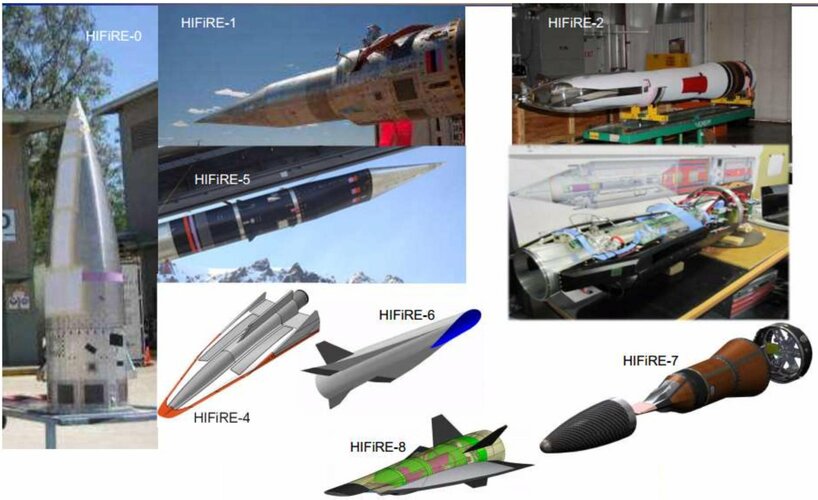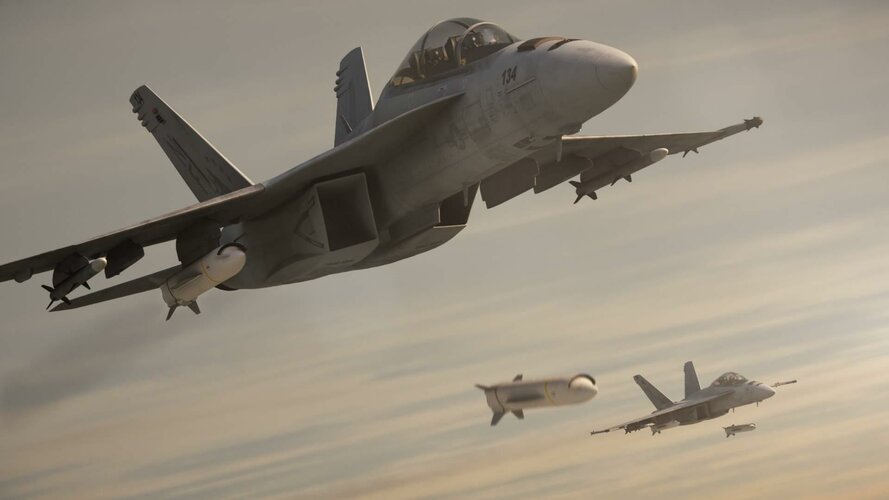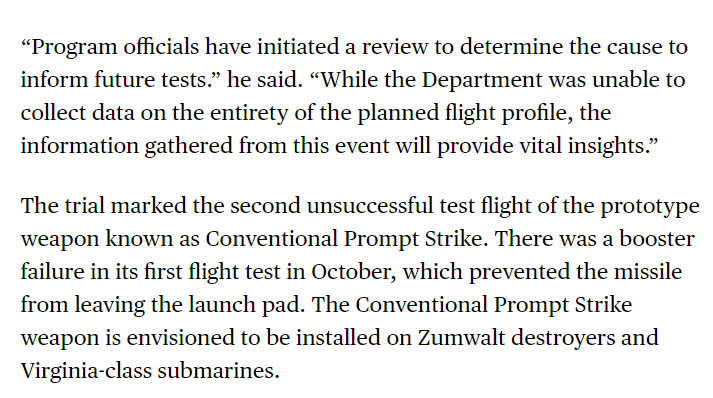Why do I feel like they will cancel LRHW/ CPS and instead buy something like TLAM block IVCRS report, Hypersonic Weapons: Background and Issues for Congress Updated May 5, 2022
"The Pentagon’s FY2023 budget request for hypersonic research is $4.7 billion—up from $3.8 billion in the FY2022 request. The Missile Defense Agency additionally requested $225.5 million for hypersonic defense. At present, the Department of Defense (DOD) has not established any programs of record for hypersonic weapons, suggesting that it may not have approved either mission requirements for the systems or long-term funding plans. Indeed, as Principal Director for Hypersonics (Office of the Under Secretary of Defense for Research and Engineering) Mike White has stated, DOD has not yet made a decision to acquire hypersonic weapons and is instead developing prototypes to assist in the evaluation of potential weapon system concepts and mission sets."
Figures show the joint Army LRHW/Navy CPS R&D FY2023 budget request $2 billion up from $1.8 billion in FY2022
You are using an out of date browser. It may not display this or other websites correctly.
You should upgrade or use an alternative browser.
You should upgrade or use an alternative browser.
Current US hypersonic weapons projects. (General)
- Thread starter Sferrin
- Start date
- Joined
- 3 June 2011
- Messages
- 18,340
- Reaction score
- 12,245
Because that would be par for the course. Right there with ya.Why do I feel like they will cancel LRHW/ CPS and instead buy something like TLAM block IVCRS report, Hypersonic Weapons: Background and Issues for Congress Updated May 5, 2022
"The Pentagon’s FY2023 budget request for hypersonic research is $4.7 billion—up from $3.8 billion in the FY2022 request. The Missile Defense Agency additionally requested $225.5 million for hypersonic defense. At present, the Department of Defense (DOD) has not established any programs of record for hypersonic weapons, suggesting that it may not have approved either mission requirements for the systems or long-term funding plans. Indeed, as Principal Director for Hypersonics (Office of the Under Secretary of Defense for Research and Engineering) Mike White has stated, DOD has not yet made a decision to acquire hypersonic weapons and is instead developing prototypes to assist in the evaluation of potential weapon system concepts and mission sets."
Figures show the joint Army LRHW/Navy CPS R&D FY2023 budget request $2 billion up from $1.8 billion in FY2022
- Joined
- 21 April 2009
- Messages
- 13,760
- Reaction score
- 7,700
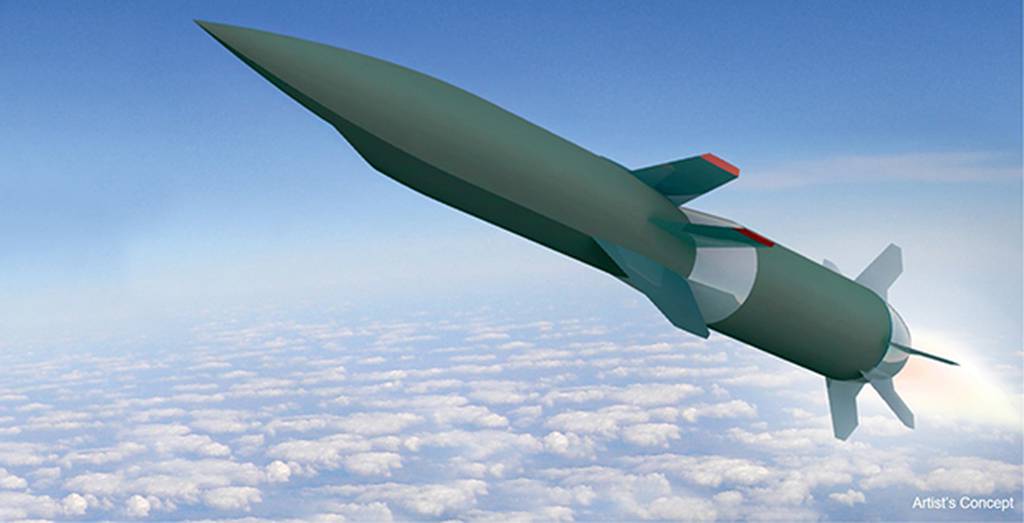
DARPA maturing scramjet-powered hypersonic weapon concept through follow-on program
Initial funding for MoHAWC would fund long-lead components for four flight-test systems, technology risk-reduction efforts and early ground tests.
- Joined
- 3 June 2011
- Messages
- 18,340
- Reaction score
- 12,245
Throwing everything at the wall. Also different missions have different requirements.Why they have to make so many different program between HAWC and HACM?. First Screaming arrow, then SCiFiRE, then now MoHAWC?.
HACM is the USAF weapons project that postdates the DARPA/USAF HAWC weapons demonstrator. These were explicitly scramjets. Screaming Arrow was a USN weapons project which had different constraints - it has to be compatible with carrier storage and hypersonic, but not explicitly scramjet. I believe it has been cancelled at this point and is replaced with HALO, which I don't think we have any details for but at a minimum it presumably also needs to be carrier compatible. SciFIRE seems to primarily an Australian project with US involvement and US contractors as an exchange of technology (I haven't been able find budget documents indicating who the major source of funding is for the project). I think this has to do with the AUKUS treaty and I suspect this allows for US use of the Woomera test range. I would expect a lot of HAWC tech to move in that direction and I'd assume part of the HACM program would be tests at Woomera range.Why they have to make so many different program between HAWC and HACM?. First Screaming arrow, then SCiFiRE, then now MoHAWC?.
So primarily the various projects seem to be different services tailoring HAWC like scramjets to their differing requirements (HALO isn't explicitly stated to have scramjet as a requirement but I'd be shocked if it were anything else). I would expect the Australian and USN projects to have a lot of similarities given they both would use the F-18 as the primary carrier, but without knowing more about the requirements of the programs it's impossible to say for certainty.
MoHAWC seems to just be a continuation of the HAWC research program (which is to be completed this year) and not a weapon system. It appears they are looking for efficiency improvements on the basic HAWC platforms now that the basic engineering has been validated. Presumably any lessons learned would feed back into the other actual weapons programs, or at least future spirals of such. The fact that all of these projects seem to employ 3D printing for the combustor will probably allow for quick design iterations in the various programs as the technology is developed.
bring_it_on
I really should change my personal text
- Joined
- 4 July 2013
- Messages
- 3,677
- Reaction score
- 3,853
Why they have to make so many different program between HAWC and HACM?. First Screaming arrow, then SCiFiRE, then now MoHAWC?.
Because they each serve a purpose. HAWC is a technology development effort that DARPA and USAF created after the successes of the X-51 so that scramjet development inched closer to a real "weapon" as opposed to a demo vehicle. It is the bridge to an eventual USAF and USN scramjet cruise missile. It is not a weapons prototyping effort but a tech demonstrator for a future weapon. MoHAWC extends HAWC by allowing contractors / designers to bring v2's of their designs and iterate for better performance and lower cost. Its a good way to close out the effort and allow them to refresh their designs based on lessons learned via HAWC and during the design and testing phase of the effort. It moves the technology needle forward on scramjet designs.
HACM is the operational prototyping program that is the "weapons program" that takes HAWC and builds an Air Force weapon out of the tech HAWC matured. The plan was always to spend 6-8 years on basic tech development around boost glide vehicles, and scramjet cruise missiles and then spin off that work into an actual weapon program. TBG and HAWC were set up in 2014, and as these programs matured weapon programs in the form of ARRW and HACM were spun off as expected. In the case of ARRW these things happened in parallel (somewhat) while HACM follows (basically) HAWC completion and some initial work conducted by OSD's SciFire (PDR).
Screaming Arrow is essentially a S&T effort that de-risks a future Navy weapon. SciFire likewise is the same..it takes from HAWC and prototypes a fighter compatible scramjet weapon maturing the design further..HACM picks up that work and completes a CDR for a USAF specific weapons and extends that into a fielded operational prototype. The Navy has its own program that picks up work done on SciFire and SA and builds an operational prototype out of it.
There will be significant overlap in these efforts as they are all being coordinated at some level by the joint hypersonic team. There is a technology development and weapon development cycle and each of these programs addresses some component of it before passing it on to another effort and eventually to a program office that isn't developing tech but putting it all together into an operational weapon (HACM for USAF, and HALO for the Navy).
Last edited:
luritie
I really should change my personal text
- Joined
- 13 June 2013
- Messages
- 71
- Reaction score
- 180
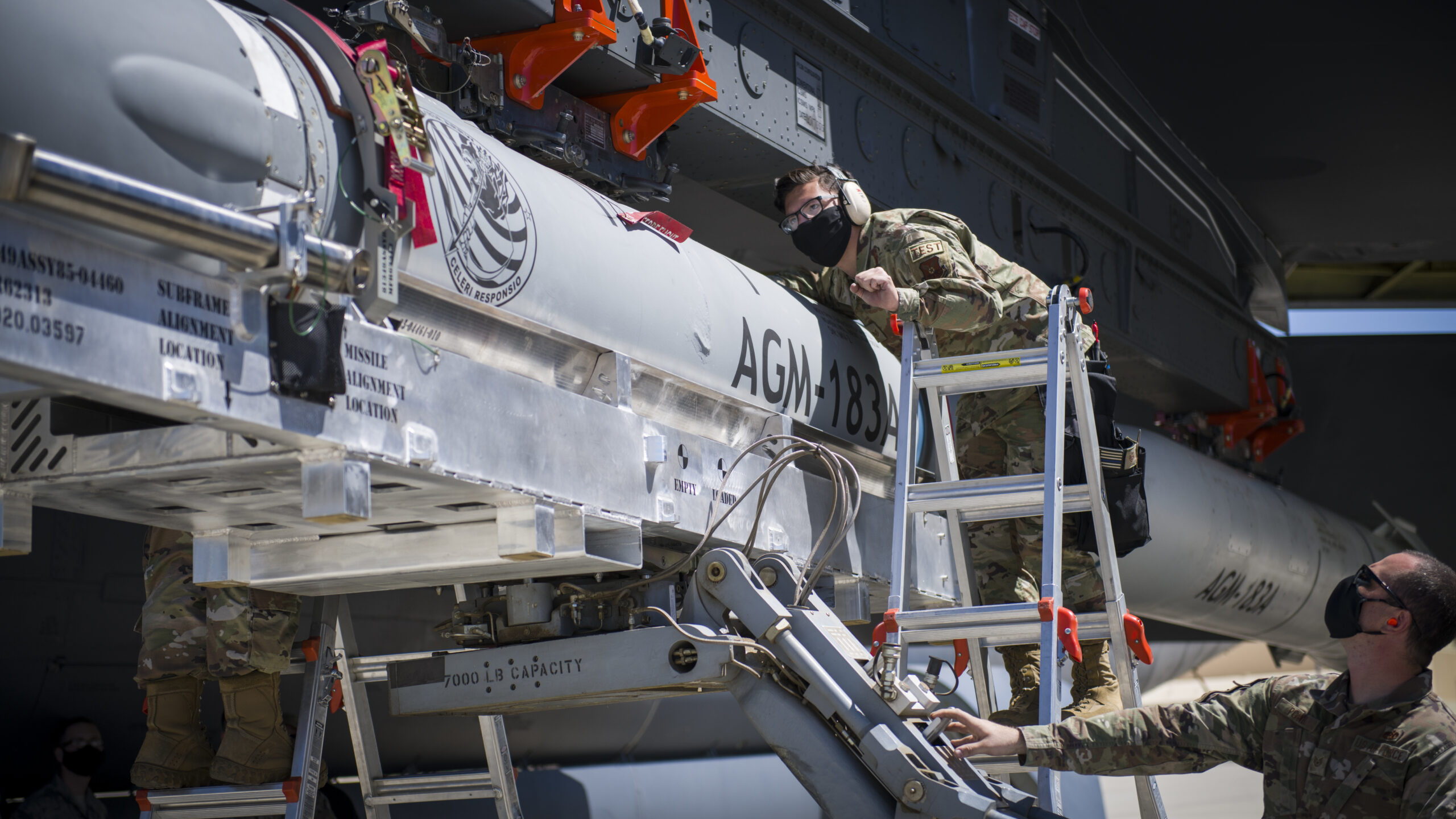
Air Force to name newest hypersonic weapon maker by September - Breaking Defense
The Hypersonic Attack Cruise Missile program, although nascent, is “going pretty well," program executive Brig. Gen. Heath Collins told Breaking Defense in an exclusive interview.
In_A_Dream
ACCESS: Top Secret
- Joined
- 3 June 2019
- Messages
- 673
- Reaction score
- 687
How's Project Mayhem going?
It would appear Air Force Secretary Frank Kendall might have doubts on the business case for the expensive ARRW hypersonic boost-glide missile and looking at the option of the less expensive HACM hypersonic scramjets, presuming Kendall thinking of the $billions funding requirements needed for other Air Force priority programs B-21, NGAD and new gen XA100/101 jets etc. If his thinking influences the Pentagon it might throw doubt on the boost-glide Army LRHW and Navy CPS ever becoming a programs of record.
"However, Air Force Secretary Frank Kendall has voiced concerns about the Defense Department’s approach to hypersonic weapons, stating that the Air Force should be careful not to replicate expensive capabilities that China and Russia have that may only marginally push forward the service’s advantage.
Even if ARRW moves through its next two test launches smoothly, Kendall could choose to wait until all flight tests are complete before committing to making ARRW a program of record.
And even if ARRW is successful in all future testing, Kendall could still opt to cancel the program if it doesn’t match the service’s requirements or budget, Collins acknowledged.
“He wants us to execute and buy down the risk and show that we we’ve demonstrated capability. [But] a lot of the questions he’s been asking in public and within the Air Force is, what are the unique target sets that ARRW holds down and is it worth the cost of the rounds?” he said. “He’s asking for the business case.”
https://breakingdefense.com/2022/05/air-force-to-name-newest-hypersonic-weapon-maker-by-september/
"However, Air Force Secretary Frank Kendall has voiced concerns about the Defense Department’s approach to hypersonic weapons, stating that the Air Force should be careful not to replicate expensive capabilities that China and Russia have that may only marginally push forward the service’s advantage.
Even if ARRW moves through its next two test launches smoothly, Kendall could choose to wait until all flight tests are complete before committing to making ARRW a program of record.
And even if ARRW is successful in all future testing, Kendall could still opt to cancel the program if it doesn’t match the service’s requirements or budget, Collins acknowledged.
“He wants us to execute and buy down the risk and show that we we’ve demonstrated capability. [But] a lot of the questions he’s been asking in public and within the Air Force is, what are the unique target sets that ARRW holds down and is it worth the cost of the rounds?” he said. “He’s asking for the business case.”
https://breakingdefense.com/2022/05/air-force-to-name-newest-hypersonic-weapon-maker-by-september/
I just hope they don't cancel all hypersonic program to rely on the super cheap Tomahawk. As long as they at least keep the HACM and HALOIt would appear Air Force Secretary Frank Kendall might have doubts on the business case for the expensive ARRW hypersonic boost-glide missile and looking at the option of the less expensive HACM hypersonic scramjets, presuming Kendall thinking of the $billions funding requirements needed for other Air Force priority programs B-21, NGAD and new gen XA100/101 jets etc. If his thinking influences the Pentagon it might throw doubt on the boost-glide Army LRHW and Navy CPS ever becoming a programs of record.
"However, Air Force Secretary Frank Kendall has voiced concerns about the Defense Department’s approach to hypersonic weapons, stating that the Air Force should be careful not to replicate expensive capabilities that China and Russia have that may only marginally push forward the service’s advantage.
Even if ARRW moves through its next two test launches smoothly, Kendall could choose to wait until all flight tests are complete before committing to making ARRW a program of record.
And even if ARRW is successful in all future testing, Kendall could still opt to cancel the program if it doesn’t match the service’s requirements or budget, Collins acknowledged.
“He wants us to execute and buy down the risk and show that we we’ve demonstrated capability. [But] a lot of the questions he’s been asking in public and within the Air Force is, what are the unique target sets that ARRW holds down and is it worth the cost of the rounds?” he said. “He’s asking for the business case.”
https://breakingdefense.com/2022/05/air-force-to-name-newest-hypersonic-weapon-maker-by-september/
Forest Green
ACCESS: Above Top Secret
- Joined
- 11 June 2019
- Messages
- 9,532
- Reaction score
- 17,500
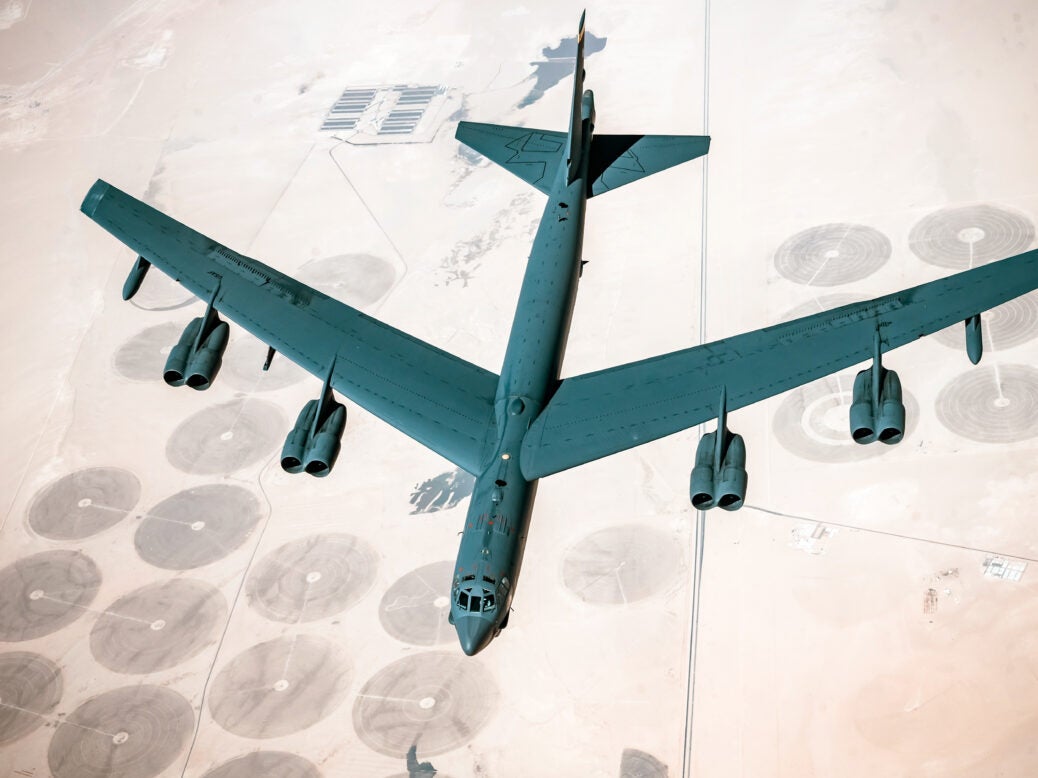
USAF conducts successful flight test of ARRW hypersonic weapon
The US Air Force (USAF) has conducted a successful hypersonic air-launched rapid response weapon (ARRW) test.
Forest Green
ACCESS: Above Top Secret
- Joined
- 11 June 2019
- Messages
- 9,532
- Reaction score
- 17,500
- Joined
- 16 April 2008
- Messages
- 9,608
- Reaction score
- 14,512
Look 7 posts up (and other places in this thread).
- Joined
- 21 April 2009
- Messages
- 13,760
- Reaction score
- 7,700

Rocket Sled Traveling At 7,200 km/h (4,363 mph) Successfully Stopped During Hypersonic Test At Holloman
The test marked the fastest recovery of a monorail sled in over 30 years, and the first time a planned reusable sled was ever recovered at those speeds.
- Joined
- 13 June 2007
- Messages
- 2,173
- Reaction score
- 3,095
Just posted on AvWeek - is this SPEAR or HyFly 2 in the artwork?
Text/caption that went with the artwork is: "The Weekly Debrief: Boeing Reveals Concepts For High-Speed SPEAR, HyFly 2 Boeing has released concepts of two different, carrier-compatible missiles—one powered by a dual-combustion scramjet and the other by a high-supersonic ramjet—for the first time. The HyFly II scramjet and the Supersonic Propulsion Enabled Advanced Ramjet (SPEAR) programs moved forward in late 2020 based on a common capability: Unlike the two-stage, scramjet-powered Hypersonic Attack Cruise Missile (HACM) in development by the U.S. Air Force, the U.S. Navy needs a long-range, high-speed missile that fits on a carrier’s weapons elevators and will not scrape the deck during landings. Credit: Boeing"
Enjoy the Day! Mark
Text/caption that went with the artwork is: "The Weekly Debrief: Boeing Reveals Concepts For High-Speed SPEAR, HyFly 2 Boeing has released concepts of two different, carrier-compatible missiles—one powered by a dual-combustion scramjet and the other by a high-supersonic ramjet—for the first time. The HyFly II scramjet and the Supersonic Propulsion Enabled Advanced Ramjet (SPEAR) programs moved forward in late 2020 based on a common capability: Unlike the two-stage, scramjet-powered Hypersonic Attack Cruise Missile (HACM) in development by the U.S. Air Force, the U.S. Navy needs a long-range, high-speed missile that fits on a carrier’s weapons elevators and will not scrape the deck during landings. Credit: Boeing"
Enjoy the Day! Mark
Attachments
thedewline
ACCESS: Restricted
- Joined
- 13 December 2010
- Messages
- 13
- Reaction score
- 20
SpearJust posted on AvWeek - is this SPEAR or HyFly 2 in the artwork?
Text/caption that went with the artwork is: "The Weekly Debrief: Boeing Reveals Concepts For High-Speed SPEAR, HyFly 2 Boeing has released concepts of two different, carrier-compatible missiles—one powered by a dual-combustion scramjet and the other by a high-supersonic ramjet—for the first time. The HyFly II scramjet and the Supersonic Propulsion Enabled Advanced Ramjet (SPEAR) programs moved forward in late 2020 based on a common capability: Unlike the two-stage, scramjet-powered Hypersonic Attack Cruise Missile (HACM) in development by the U.S. Air Force, the U.S. Navy needs a long-range, high-speed missile that fits on a carrier’s weapons elevators and will not scrape the deck during landings. Credit: Boeing"
Enjoy the Day! Mark
That art work literally look exactly the same as ASALMJust posted on AvWeek - is this SPEAR or HyFly 2 in the artwork?
Text/caption that went with the artwork is: "The Weekly Debrief: Boeing Reveals Concepts For High-Speed SPEAR, HyFly 2 Boeing has released concepts of two different, carrier-compatible missiles—one powered by a dual-combustion scramjet and the other by a high-supersonic ramjet—for the first time. The HyFly II scramjet and the Supersonic Propulsion Enabled Advanced Ramjet (SPEAR) programs moved forward in late 2020 based on a common capability: Unlike the two-stage, scramjet-powered Hypersonic Attack Cruise Missile (HACM) in development by the U.S. Air Force, the U.S. Navy needs a long-range, high-speed missile that fits on a carrier’s weapons elevators and will not scrape the deck during landings. Credit: Boeing"
Enjoy the Day! Mark
Last edited:
- Joined
- 3 June 2011
- Messages
- 18,340
- Reaction score
- 12,245
SiAW appears to be an air-launched PrSM.
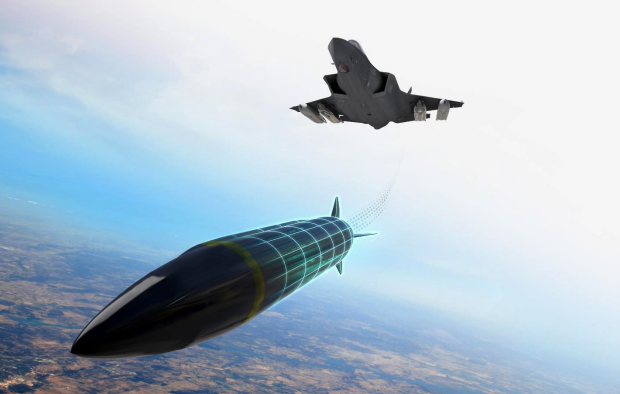
 www.airforcemag.com
www.airforcemag.com

Lockheed Martin, L3Harris, Northrop Grumman Get Stand-in Attack Weapon Contracts | Air & Space Forces Magazine
Three of five competitors for the Stand-in Attack Weapon, or SiAW, got small contracts to get the project going.
I hadn't realized the program got opened up; I thought they were just going with the new HARM. An air launched PrSM makes sense though; I always thought it would be a quick off the shelf way to make a high speed air launched missile. You get the benefits of whatever spirals the army comes out with going forward.
Forest Green
ACCESS: Above Top Secret
- Joined
- 11 June 2019
- Messages
- 9,532
- Reaction score
- 17,500
Will PrSM fit internally on an F-35? It should do right?
Will PrSM fit internally on an F-35? It should do right?
It's 13' x 17", and the bomb bay on an F-35A/C is supposed to be 14' (pretty sure JSOW can be carried internally). So I *think* the bay is big enough, though almost certainly not on the F-35B.
smart decision , an air launched PrSM will shortern the development time significantly while still give very awesome capability. Ground launched PrSM can already reach 500 km, air launched one can probably reach 1000 km and hypersonic speedSiAW appears to be an air-launched PrSM.

Lockheed Martin, L3Harris, Northrop Grumman Get Stand-in Attack Weapon Contracts | Air & Space Forces Magazine
Three of five competitors for the Stand-in Attack Weapon, or SiAW, got small contracts to get the project going.www.airforcemag.com
Forest Green
ACCESS: Above Top Secret
- Joined
- 11 June 2019
- Messages
- 9,532
- Reaction score
- 17,500
Air-launch often triples the range.smart decision , an air launched PrSM will shortern the development time significantly while still give very awesome capability. Ground launched PrSM can already reach 500 km, air launched one can probably reach 1000 km and hypersonic speedSiAW appears to be an air-launched PrSM.

Lockheed Martin, L3Harris, Northrop Grumman Get Stand-in Attack Weapon Contracts | Air & Space Forces Magazine
Three of five competitors for the Stand-in Attack Weapon, or SiAW, got small contracts to get the project going.www.airforcemag.com
Wouldn't that give it even longer range than HACM?Air-launch often triples the range.smart decision , an air launched PrSM will shortern the development time significantly while still give very awesome capability. Ground launched PrSM can already reach 500 km, air launched one can probably reach 1000 km and hypersonic speedSiAW appears to be an air-launched PrSM.

Lockheed Martin, L3Harris, Northrop Grumman Get Stand-in Attack Weapon Contracts | Air & Space Forces Magazine
Three of five competitors for the Stand-in Attack Weapon, or SiAW, got small contracts to get the project going.www.airforcemag.com
Wouldn't that give it even longer range than HACM?
There is no published range requirement for HACM that I'm aware of, though a HAWC test was said to go over 300 miles. The difference would be that PrSM would coast to its target and be sub hypersonic, probably even sub sonic, at its longest ranges. Air launch would boast speed and range but it would still be a burn out/coast flight regime. A scramjet will sustain the hypersonic speed for a longer duration.
bring_it_on
I really should change my personal text
- Joined
- 4 July 2013
- Messages
- 3,677
- Reaction score
- 3,853
Range isn't everything. The stand-in attack weapon is going after a different threat than a Mach 5+ cruiser based around a scramjet engine. SiAW is not going to compete against that but doesn't need to since it is designed to be launched from the IWB of 5th and 6th gen fighters (among other platforms).
The AF is unlikely to replace a sub 12" diameter weapon with a 17" diameter weapon. It is highly unlikely that LM's offering is an AL-PrSM (setting aside any animation shown by their marketing). The enduring "SiAW" is probably not going to be that far off in terms of size compared to the interim solution which is the 11.5" AARGM-ER. It appears (from NG's marketing materials) that NG will be modifying its AARGM-ER for the enduring SiAW requirement likely focusing on opening up the system, its software and mission planning elements so that newer seekers, warhead options and data-links can be added as required. Given that, and assuming this is true, then that sort of shows what the AF's requirements are. A nearly 40% increase in missile SRM diameter would mean that the AF has dramatically altered the requirements from the weapon and there is nothing, as of this time, that suggests that they have or are about to do that.
smart decision , an air launched PrSM
The AF is unlikely to replace a sub 12" diameter weapon with a 17" diameter weapon. It is highly unlikely that LM's offering is an AL-PrSM (setting aside any animation shown by their marketing). The enduring "SiAW" is probably not going to be that far off in terms of size compared to the interim solution which is the 11.5" AARGM-ER. It appears (from NG's marketing materials) that NG will be modifying its AARGM-ER for the enduring SiAW requirement likely focusing on opening up the system, its software and mission planning elements so that newer seekers, warhead options and data-links can be added as required. Given that, and assuming this is true, then that sort of shows what the AF's requirements are. A nearly 40% increase in missile SRM diameter would mean that the AF has dramatically altered the requirements from the weapon and there is nothing, as of this time, that suggests that they have or are about to do that.
Last edited:
Question for those familiar with the HyFly program - was the demonstrator intended to cruise at supersonic speed for an extended period and employ the scramjet only towards the end of flight or was it’s sole purpose to take over acceleration post boost phase and transition into scramjet mode as quickly as possible? I guess what I’m asking is was the ramjet mode more fuel efficient than the scramjet mode in low Mach numbers? Could range be extended if speed was sacrificed? Or was it more efficient to transition directly to a scramjet mode in terms of total range?
- Joined
- 21 April 2009
- Messages
- 13,760
- Reaction score
- 7,700
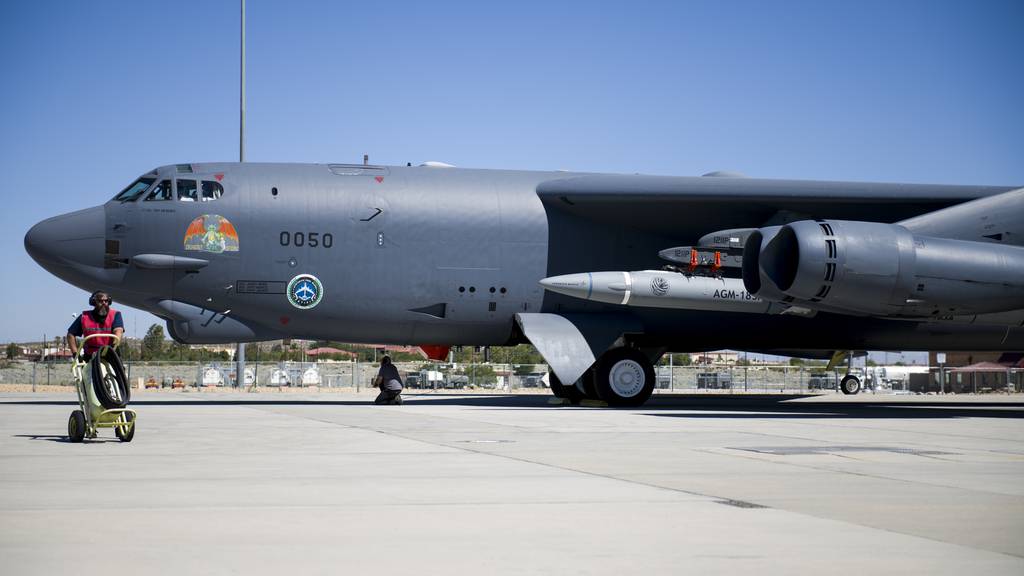
Pentagon should consider ‘National Hypersonic Initiative’ to speed development, lawmakers say
The House Armed Services Committee wants DoD to explore options for creating a National Hypersonic Initiative that would guide collaboration among the services and agencies involved in development and testing activities and help accelerate production and fielding of hypersonic systems.
aonestudio
I really should change my personal text
- Joined
- 11 March 2018
- Messages
- 2,964
- Reaction score
- 7,493
US Hypersonic Missile Fails in Test in Fresh Setback for Program
Pentagon says problem took place following missile ignition
China, Russia and North Korea pressing ahead with hypersonics
ByJon Herskovitz and Anthony Capaccio
30 июня 2022 г. в 06:20 GMT+3
A flight test of a hypersonic missile system in Hawaii ended in failure due to a problem that took place after ignition, the Department of Defense said, delivering a fresh blow to a program that has suffered stumbles.
It didn’t provide further details of what took place in the Wednesday test, but said in a statement sent by email “the Department remains confident that it is on track to field offensive and defensive hypersonic capabilities on target dates beginning in the early 2020s.”
“An anomaly occurred following ignition of the test asset,” Pentagon spokesman Navy Lieutenant Commander Tim Gorman said in the statement.
“Program officials have initiated a review to determine the cause to inform future tests.” he said. “While the Department was unable to collect data on the entirety of the planned flight profile, the information gathered from this event will provide vital insights.”
The trial marked the second unsuccessful test flight of the prototype weapon known as Conventional Prompt Strike. There was a booster failure in its first flight test in October, which prevented the missile from leaving the launch pad. The Conventional Prompt Strike weapon is envisioned to be installed on Zumwalt destroyers and Virginia-class submarines.
The Army is developing a land-based version. Lockheed Martin Corp and Northrop Grumman Corp are the top contractors.
The Pentagon is feeling pressure to deploy hypersonic systems as rivals including Russia, China and North Korea are pressing ahead with the systems designed to evade interception by flying at more than five times the speed of sound and gliding on a maneuverable path to deliver nuclear warheads.
China is investing heavily in hypersonic weapons, putting one in orbit in July of last year that flew 25,000 miles (40,000 kilometers) in more than 100 minutes of flight, according to the top US nuclear commander. In January, North Korea conducted two separate launches of hypersonic missile systems that traveled several hundred kilometers.
Russia debuted a hypersonic air-to-ground missile in its attack on Ukraine. Adversaries don’t have to meet the rigorous standards set under the US defense acquisition system or face public scrutiny over delays and failure.
The slower pace of US hypersonic programs prompted a number of heated exchanges when Defense Secretary Lloyd Austin testified in April before the House Armed Services Committee.
“You recently called in the defense industrial community that were involved in the hypersonics development as to how we can speed that up,” Republican Representative Mike Turner of Ohio said. “We’re behind our adversaries.”
Without denying that, Austin said “we have to be careful” because “hypersonic is a capability, sir, but it’s not the only capability.” He added “I have engaged industry” to “make sure that they’re leaning into” hypersonic development.
— With assistance by Max Zimmerman
Last edited by a moderator:
Forest Green
ACCESS: Above Top Secret
- Joined
- 11 June 2019
- Messages
- 9,532
- Reaction score
- 17,500
Paywall. Was it ARRW again?
dark sidius
ACCESS: Top Secret
- Joined
- 1 August 2008
- Messages
- 1,197
- Reaction score
- 1,070
What is going on with hypersonic in USA ? failure / failure the ennemy take the distance with hypersonic technology putting realy a danger
Forest Green
ACCESS: Above Top Secret
- Joined
- 11 June 2019
- Messages
- 9,532
- Reaction score
- 17,500
I don't understand how SpaceX can have 3 successful space launches in one weekend, but the ARRW booster won't light and the CPS/LRHW booster fails after launch. It almost looks like the contractors are deliberately failing to make more money, because this much accidental failure is impossible.
Last edited:
- Joined
- 21 April 2009
- Messages
- 13,760
- Reaction score
- 7,700
Very disconcerting to say the least. US better ramp up testing ASAP. Hypersonic Czar??I don't understand how SpaceX can have 3 successful space launches in one weekend, but the ARRW booster won't light and the CPS/LRHW booster fails after launch. It almost looks like the contractors are deliberately failing to make more money, because this much accidental failure is impossible.
- Joined
- 4 July 2010
- Messages
- 2,516
- Reaction score
- 3,096
This was to be an all-up test, so definitely concern here. I wonder if we'll get any more information, the current statement is very broad and only indicates the booster had the "anomaly."
I'm told Czars are un-American.
I'm told Czars are un-American.
- Joined
- 3 September 2006
- Messages
- 1,475
- Reaction score
- 1,472
SpaceX is managed by an entrepreneur who puts in his own money, then makes his own decisions to get to his desired outcome.I don't understand how SpaceX can have 3 successful space launches in one weekend, but the ARRW booster won't light and the CPS/LRHW booster fails after launch.
A program managed by civil servants who spend the money of taxpayers, ... the desired outcome is? Hint: the decision makers in Congress nurture constituencies, the civil servants nurture jobs.
Check the track record of NASA vs SpaceX for a wake-up call.
bring_it_on
I really should change my personal text
- Joined
- 4 July 2013
- Messages
- 3,677
- Reaction score
- 3,853
Very disconcerting to say the least. US better ramp up testing ASAP. Hypersonic Czar??I don't understand how SpaceX can have 3 successful space launches in one weekend, but the ARRW booster won't light and the CPS/LRHW booster fails after launch. It almost looks like the contractors are deliberately failing to make more money, because this much accidental failure is impossible.
How will that fix anything (you had very influential people inside Obama/Trump/Biden admins who apparently thought that these challenging systems are ripe for accelerated development. Some of them are still in the Pentagon today)? How about not putting all your operational prototypes with one contractor next time as a start. What will also help is not taking your most complex operational prototyping programs (that you've never managed to put out operationally) and putting them through an accelerated development (simpler programs are probably better candidates for that accelerated development and fielding - at least as you figure this out). PrSM seems to be doing just fine and is running a few months ahead while all these "rapid prototypes" with "residual combat capability" seem to be the ones not doing that great. At this point I'm glad they moved SM-6 1B from that rapid prototyping effort to a more traditional acquisition path..
Which is what they are designed for. Niche weapons have a place and serve an important purpose even though they are acquired in smaller numbers compared to others.ARRW and CPS probably super niche
Last edited:
- Joined
- 21 April 2009
- Messages
- 13,760
- Reaction score
- 7,700
Ramp up - more contractors, more national laboratory work, more collaboration across the broadest spectrum of participants. In my view ramp up doesn’t mean accelerate in this case. I don’t want the same contractor doing things faster (failing faster) I want as many groups with potential technologies working in parallel on the problem.Very disconcerting to say the least. US better ramp up testing ASAP. Hypersonic Czar??I don't understand how SpaceX can have 3 successful space launches in one weekend, but the ARRW booster won't light and the CPS/LRHW booster fails after launch. It almost looks like the contractors are deliberately failing to make more money, because this much accidental failure is impossible.
How will that fix anything? How about not putting all your operational prototypes with one contractor next time as a start. What will also help is not taking your most complex operational prototyping programs (that you've never managed to put out operationally) and putting them through an accelerated development (simpler programs are probably better candidates for that accelerated development and fielding - at least as you figure this out). PrSM seems to be doing just fine and is running a few months ahead while all these "rapid prototypes" with "residual combat capability" seem to be the ones not doing that great. At this point I'm glad they moved SM-6 1B from that rapid prototyping effort to a more traditional acquisition path..
Which is what they are designed for. Niche weapons have a place and serve an important purpose even though they are acquired in smaller numbers compared to others.ARRW and CPS probably super niche
Similar threads
-
Lockheed Martin AGM-183 Air-Launched Rapid Response Weapon (ARRW)
- Started by Moose
- Replies: 667
-
-
China DF-17 hypersonic boost-glide missile carrier
- Started by antigravite
- Replies: 41
-
-

